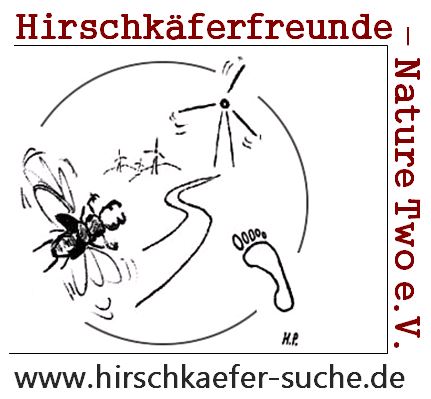Tips & tricks for a successful search
You can go specifically on stag beetle search! However, it is often worthwhile at stag beetle time to sharpen your eyes for the stag beetle even in normal everyday life! Stag beetles love trees and bushes, if they are not there, they are on their way there. In doing so, they sometimes – whether intentionally or unintentionally – make a break for it in the most diverse places.
Inhaltsverzeichnis
When are stag beetles active and thus easy to observe and when are they not?
Inhaltsverzeichnis
- Stag beetle season is from mid-May into July. The flight season begins when that of the May beetles ends.
- Flight time for the beetles is usually at dusk between 9:30 and 10:30 p.m.; daytime flights are possible but rare.
- Warm evenings, even when there are thunderstorms, are potential flight days and offer the possibility of imposing flight sights with a buzzing, memorable flight sound.
- Sharp decline in flight activity from mid-June; now increased running female stag beetles even during the day.
- In low temperatures and heavy rain, the beetles often spend several days largely motionless.
Where to find stag beetles?
- Forest: sparse old (oak) forests, forest edges, permanent clearings in the forest.
- Open land: orchards, copses, groups of trees, single trees.
- Towns, cities (gardens, parks, avenues, single trees)
- Stag beetles like to hide at the base of trunks during the day, but also stay in the crown area. There they are extremely difficult to find, because they usually remain motionless.
- Also everywhere where you don’t expect them (house wall, cellar, street).
- Stag beetles love trees (/shrubs)! If they are not there, they are on their way there.
- Stag beetles have many predators and have been known to get run over. Also look for beetle parts/remains (heads with “antlers”), etc. and report them!
Special observation highlights
- Brief and violent “swarming” of males around trees or bushes during mating ritual, because in the tree sits a female and attracts!
- Stag beetle center is the breeding site (tree stumps, lying wood, poles, railroad sleepers), also for the above-ground stag beetle life.
- Short-term hatching in groups with departure from the breeding site.
- The flat-oval hatching holes can be seen for days afterwards.
- Flight and run activity in the immediate vicinity of the hatchery throughout the season.

